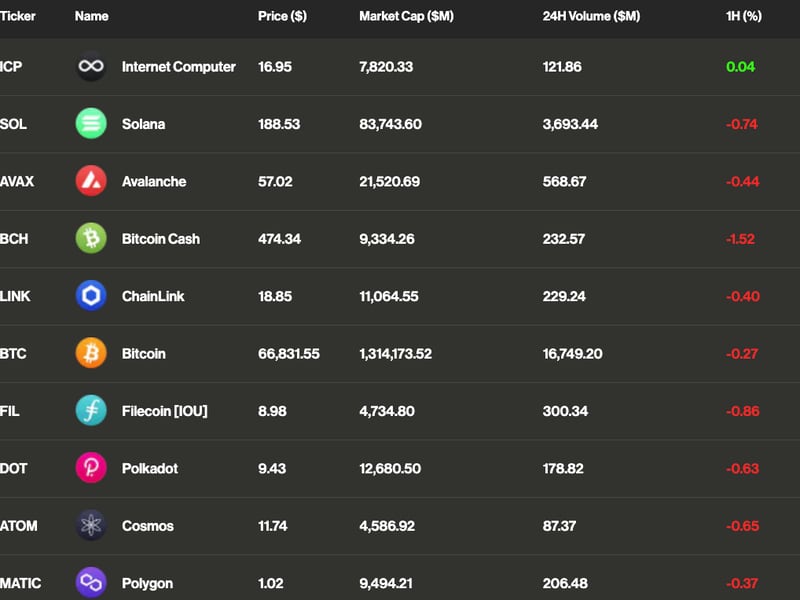First Mover: Capitalism’s Biggest Crisis Isn’t Driving People to Bitcoin – It’s the Volatility
First Mover: Capitalism’s Biggest Crisis Isn’t Driving People to Bitcoin – It’s the Volatility
“It was the best of times; it was the worst of times.”
The opening line to Charles Dickens’ “A Tale of Two Cities” provides an apt-enough description of the moment crypto investors now find themselves in as the coronavirus takes a devastating toll on the global economy, raising ugly questions about the sustainability of the traditional financial system.
You’re reading First Mover, CoinDesk’s daily markets newsletter. Assembled by the CoinDesk Markets Team, First Mover starts your day with the most up-to-date sentiment around crypto markets, which of course never close, putting in context every wild swing in bitcoin and more. We follow the money so you don’t have to. You can subscribe here.
Bitcoin is up 21% in 2020 to about $8,600. Such a performance contrasts with a 12% loss this year in the Standard & Poor’s 500 Index of U.S. stocks. It also exceeds trusted gold’s 12% gain.
At the same time, the pandemic has, with brutal efficiency, laid bare some of the structural vulnerabilities of the post-Bretton Woods monetary system, with the U.S. dollar as the de facto global reserve currency.
One of crypto bulls’ longest-running narratives is that traditional finance is structurally unstable, and that when the system comes under pressure, investors will turn to digital assets.
The Federal Reserve’s recent move to inject trillions of dollars of new money into the financial system, including for purchases of junk bonds, would seem to comport with the spirit the newspaper headline embedded into the Bitcoin blockchain’s genesis block in early 2009, in the wake of the last crisis: “Chancellor on brink of second bailout for banks.”
Many crypto-industry executives have stuck to the message that the traditional system is decaying. In its year-end 2020 results, London-listed mining firm Argo Blockchain said it expected looser monetary policy to hurt confidence in fiat currencies, a dynamic that could ultimately drive crypto adoption as people hunt for alternative stores of value.
But is that message resonating? Not necessarily among the broader population, based on the number of twitter users mentioning “bitcoin” in tweets, according to an analysis by The TIE, a data provider:

Instead it appears that popular interest in bitcoin might be more tied to its notable price volatility.
The number of Twitter users mentioning bitcoin soared after March 12’s now-infamous 39% sell-off, but the frequency ebbed as volatility subsided in April.
The Fed was buying junk bonds. Europe was desperately hashing together a stimulus package. But conversations about bitcoin grew quieter as volatility dropped to a three-month low, even as prices for the cryptocurrency were rebounding.
Twitter sentiment on bitcoin – defined as how positive or negative a tweet about the cryptocurrency was – has risen along with the price.
But even as average sentiment last week hit its highest level since July 2018, the number of people discussing bitcoin on Twitter dropped to just 12,000, according to Joshua Frank, CEO of The TIE.
Those tweeting, Frank said, appeared overwhelmingly focused on bitcoin’s upcoming “halving,” where mining rewards get cut in half every four years. Tweets that mentioned “halving” were three times higher than the number that mentioned “gold,” which is seen by many traditional investors as an accepted hedge against inflation and broader financial turmoil, he said.
Another view comes from looking at cryptocurrency’s rising trading volumes. CryptoCompare’s data shows year-to-date spot volumes in 2020 have, almost always, exceeded those of previous years.

Using the 2016 halving event as an anchor, it’s clear that volumes in the weeks leading up to the halving peaked at $1.6 billion. In contrast, this year’s busiest day, just after the March 12 price plunge, saw more than $21.6 billion in volume – nearly 15 times the high four years ago.
There’s clearly interest in crypto. But what’s driving it might be price volatility and the upcoming halving, rather than speculation that the financial system is nearing any sort of ultimate reckoning.
Tweet of the day

Bitcoin watch
BTC: Price: $8,665 (BPI) | 24-Hr High: $9,123 | 24-Hr Low: $8,539

Trend: Bitcoin is witnessing a price dip on Monday, having repeatedly failed to keep gains above $9,000 over the last four days.
The cryptocurrency fell to a low of $8,539 during the Asian trading hours and was last seen trading around $8,665, representing a 2.88% drop on the day.
The downward move may be extended further, possibly to the 200-day average at $8,000, as short-term technical studies are reporting bearish conditions. For instance, the 4-hour chart MACD histogram is printing deeper bars below the zero line and is at its lowest level since April 10.
Meanwhile, the 50-hour average, which acted as strong support throughout the rally from $6,800 to $9,400, has been breached. More importantly, the average is now beginning to trend south, a sign of bearish reversal. Similar sentiments are being echoed by the long upper wicks attached to recent daily candles.
The short-term bullish bias would be revived only if the spot price finds acceptance above the trendline falling from June 2019 highs and February 2020 lows – currently located at $9,330. Bulls failed to absorb selling pressure around the trendline hurdle on April 30.
Bitcoin may have a tough time putting in a positive performance during the day ahead, as traditional markets are reporting losses on rising U.S.-China tensions over the origins and handling of the coronavirus pandemic. Futures tied to the S&P 500 are currently down over 0.5% and the U.S. dollar is gaining ground against most major currencies.

Disclosure Read More
The leader in blockchain news, CoinDesk is a media outlet that strives for the highest journalistic standards and abides by a strict set of editorial policies. CoinDesk is an independent operating subsidiary of Digital Currency Group, which invests in cryptocurrencies and blockchain startups.









